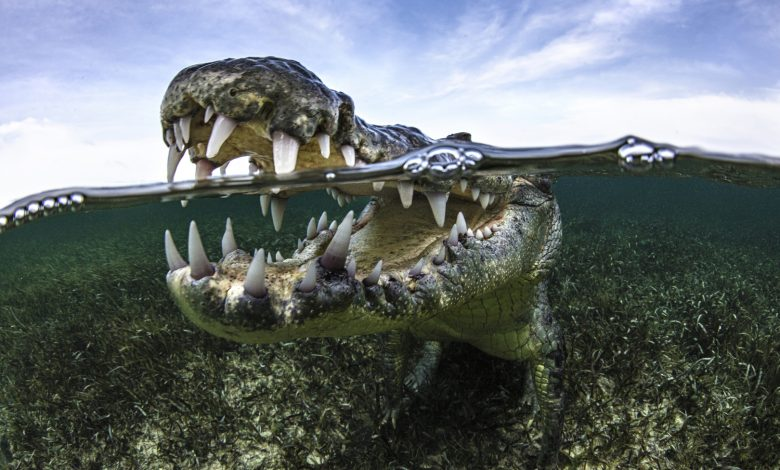She sheds light on the origins of this creature .. the discovery of a crocodile that is more than 6 million years old

A team of researchers at the University of Caetano Heredia, in partnership with colleagues from the United States and France, has discovered a prehistoric crocodile fossil in Peru.
In their paper published in Proceedings of the Royal Society B, the group describes their discovery, what they learned about the fossil and what it showed about the evolution of sea crocodiles.
Although there are two types of modern crocodiles that live in the ocean, they are mostly freshwater creatures.
This feature, according to the researchers, makes it difficult to understand the evolution of crocodiles that lived mostly in the sea in the past.
Also, previous research indicated that crocodiles lived in the southeastern parts of the Pacific Ocean about 14 million years ago.
In this new study, the researchers were looking for evidence of early crocodiles in western parts of South America, and specifically, in Peru. As part of this effort, they discovered the partial remains of an ancient crocodile.
The crocodile fossil (skull and jaw) was found in the East Pisco Basin (in the Sakaco Desert) in Peru in 2020.
Since that time, researchers have been studying their traits and characteristics and seeking to find their place in the evolutionary history of crocodiles.
Their testing showed that the fossil was approximately 7 million years old. They named it Sacacosuchus cordovai, and concluded that when the creature was alive, it might have been about four meters long.
The Sakako site has been under study for several years. Previous fossil discoveries have shown that millions of years ago, the entire region was under the sea.
The discovery of a crocodile fossil in the area indicates that it was a creature of salt water, a discovery that helps trace the evolution of crocodiles in South America.
The researchers suggest that crocodiles made their way to South America by crossing the Atlantic Ocean. From there, some may have followed the shoreline to reach what is now Peru.
They further suggested that such sea crocodiles would have had long, slender faces and that there were two main species: one subsisting almost exclusively on fish, and the other following a more diverse diet.
Source: phys.org
https://shahbapress.net/archives/25019?fbclid=IwAR0b3C0x2ZzaDsMG1FOZ3FQmJB0Fo3Ckimf6pF1-Nf5QNckbiBCoN-IpU14

